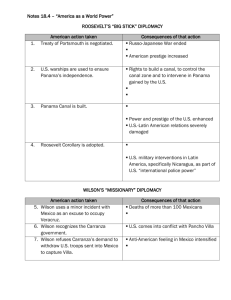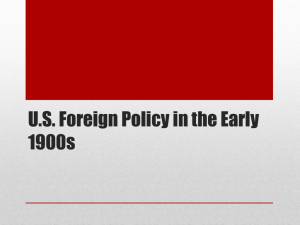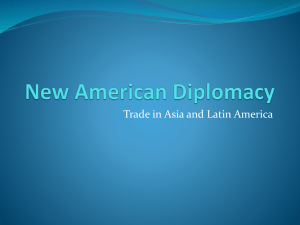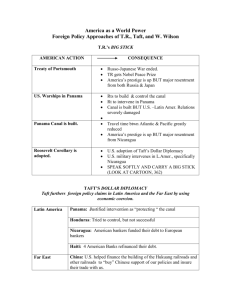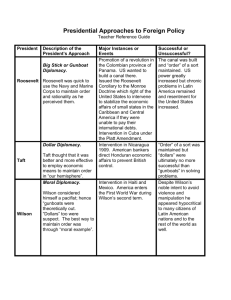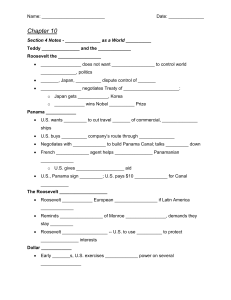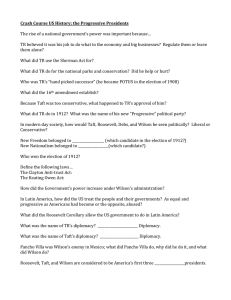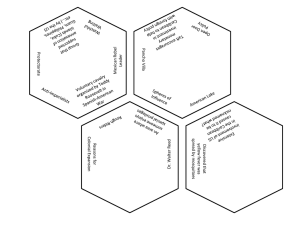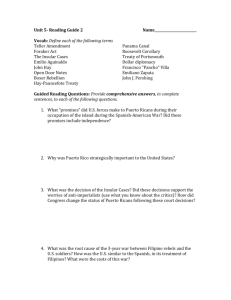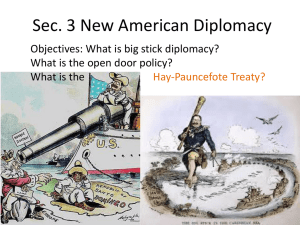File - Mr. Patrick Haughaboo
advertisement
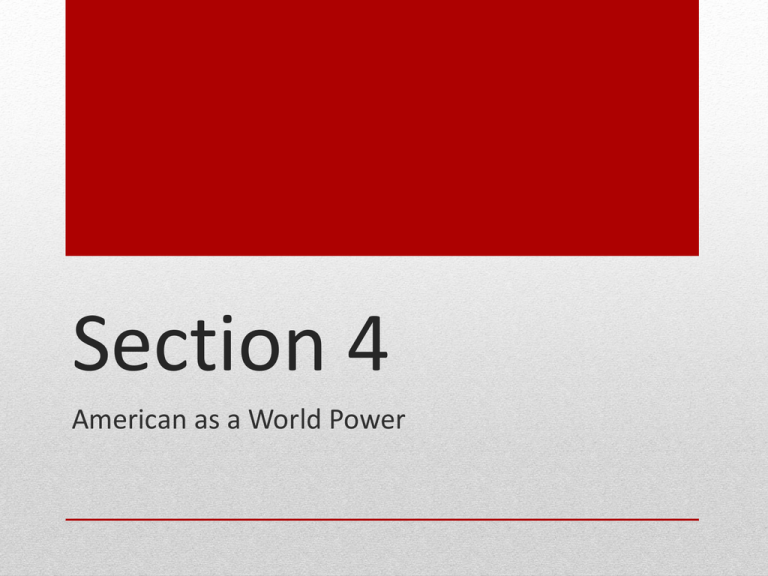
Section 4 American as a World Power Balancing Power in Asia 1. Roosevelt ended the war between Japan and Russia a. Convinced Russians to recognize Japan’s territorial gains b. Persuaded Japanese to stop fighting and to seek no further territory c. Won the Nobel Peace Prize 2. Japan and U.S. agreed to respect each other, uphold the Open Door Policy, and support China’s independence. 3. Pres. Roosevelt sent 16 battleships of the new U.S. Navy on a voyage around the world to showcase the nation’s military might. - This fleet was known as the Great White Fleet The Panama Canal A. Reasons to build 1. Save time 2. Save money 3. Help U.S. become a world power B. Hay-Pauncefote Treaty 1. Signed by Senator Hay and British Prime Minister Pauncefote. 2. Gave the U.S. the exclusive right to build a canal through central America C. After a Panamanian revolt, we recognized Panama’s independence and we signed a treaty to build the canal D. Took 10 yrs to build, but it shortened the distance from the Atlantic to the Pacific Ocean by about 8,000 miles.. Roosevelt Corollary 1. 2. 3. 4. Afraid Europe will intervene in Latin Am He wants US to be dominant power Extension of the Monroe Doctrine West African proverb… “Speak softly and carry a big stick” 5. International police power Dollar Diplomacy 1. Used by President Taft 2. Less emphasis on military strength 3. More on helping the Latin American businesses Woodrow Wilson's Diplomacy President Wilson believed in democracy Political Revolution in Mexico Wilson disliked new Mexican leader (Victoriano Huerta), sent in Marines to overthrow him Replaced by Venustiano Carranza Disliked by some Mexicans. Rebels led by Pancho Villa Mexico sent Pancho Villa to New Mexico – murdered many Americans Wilson sent John J. Pershing to capture Villa but was unsuccessful Damaged US foreign relations
